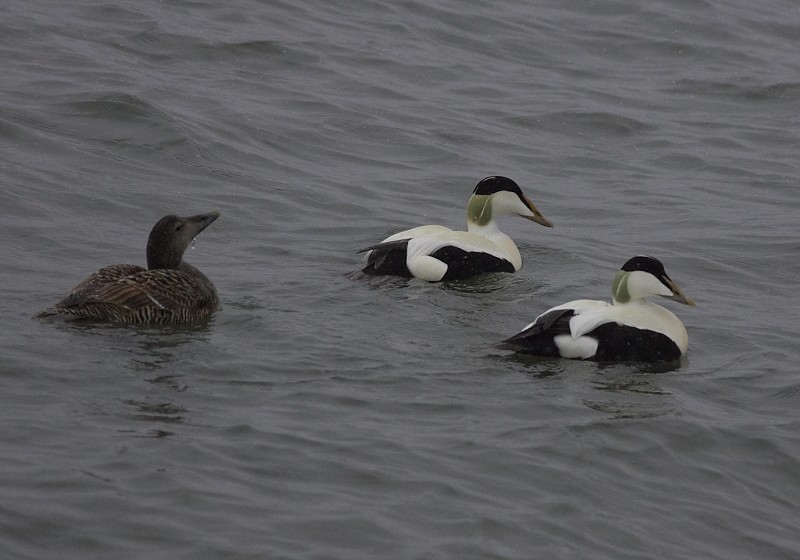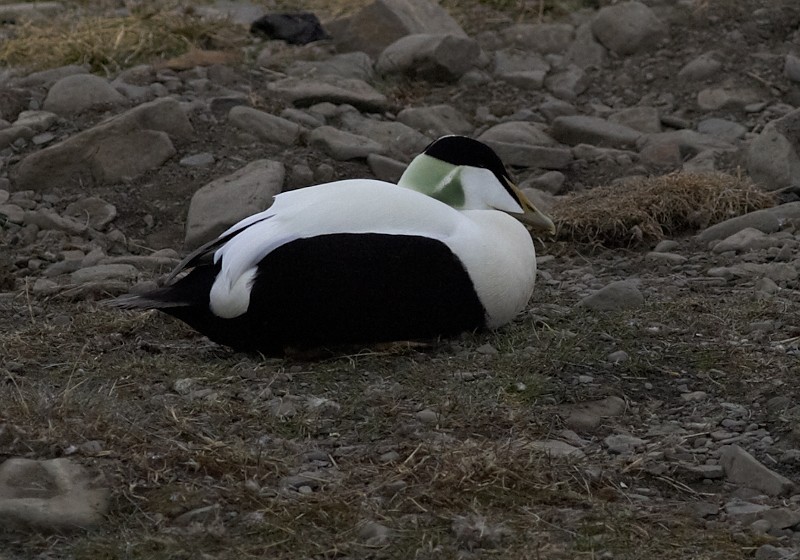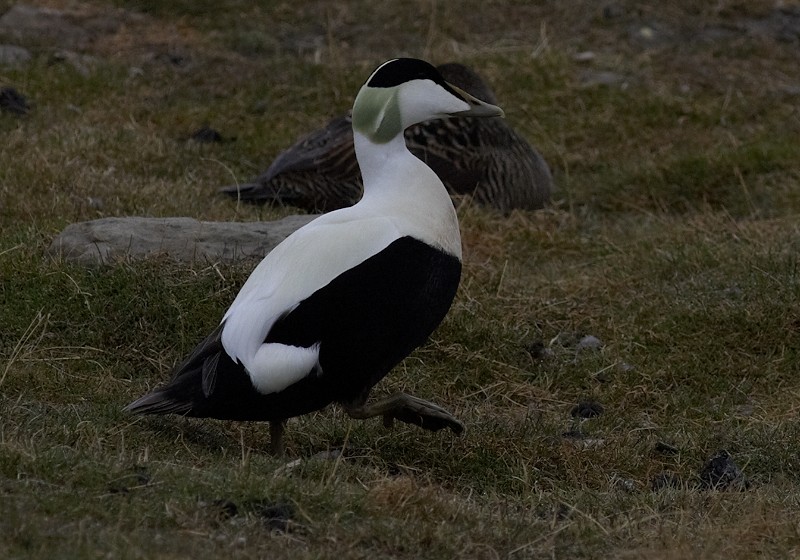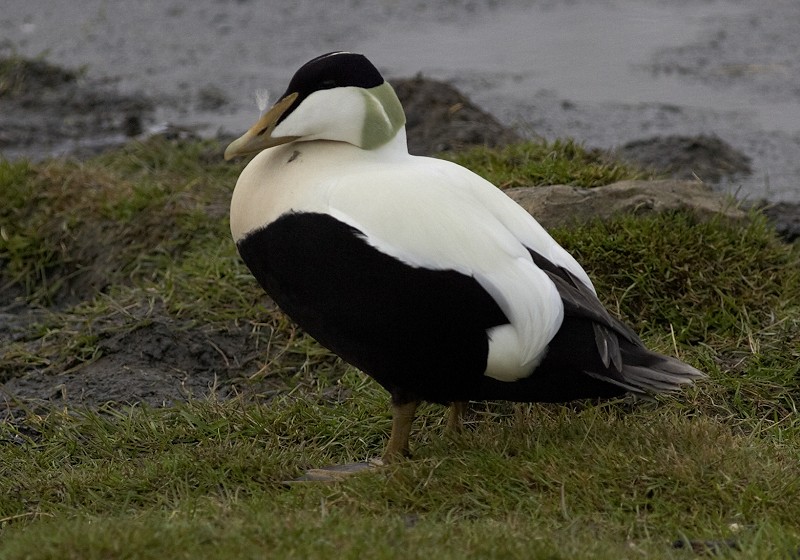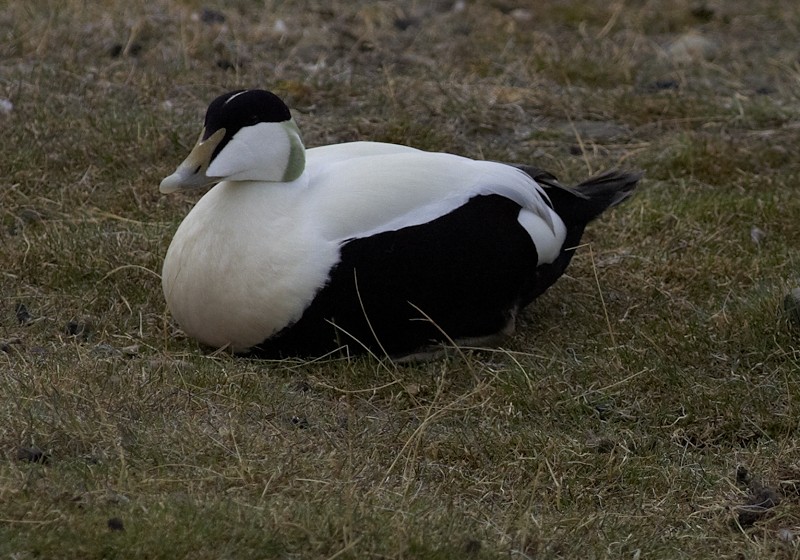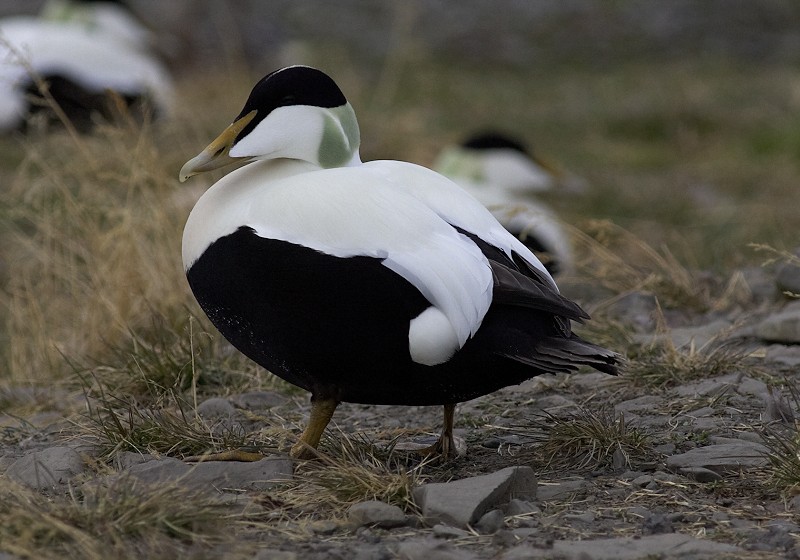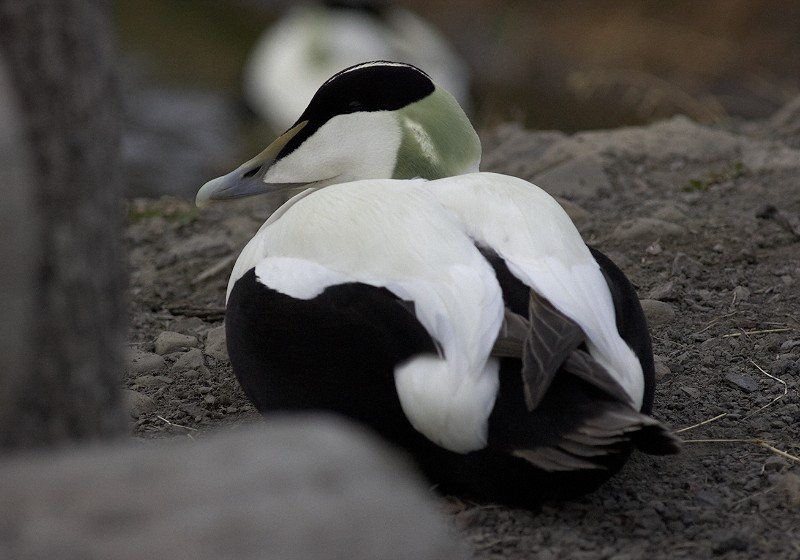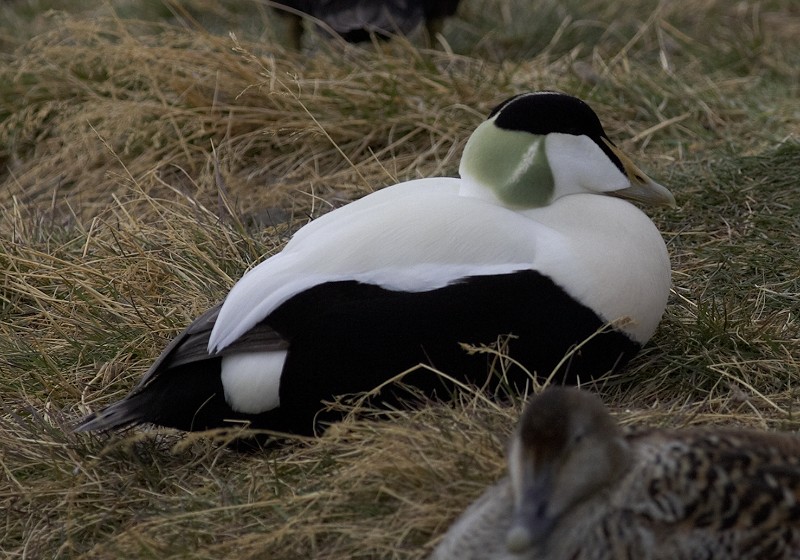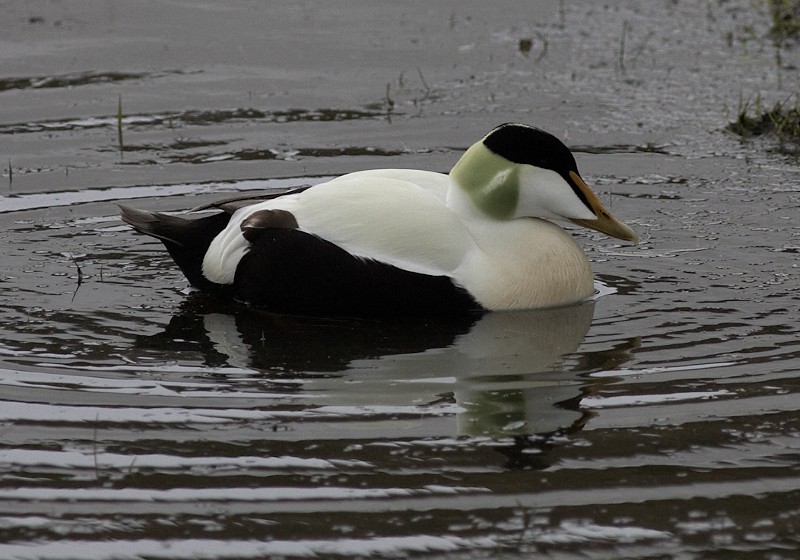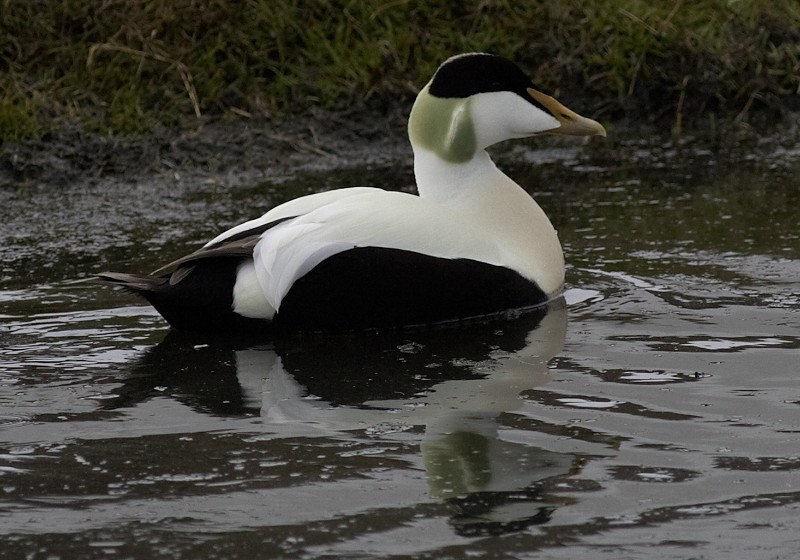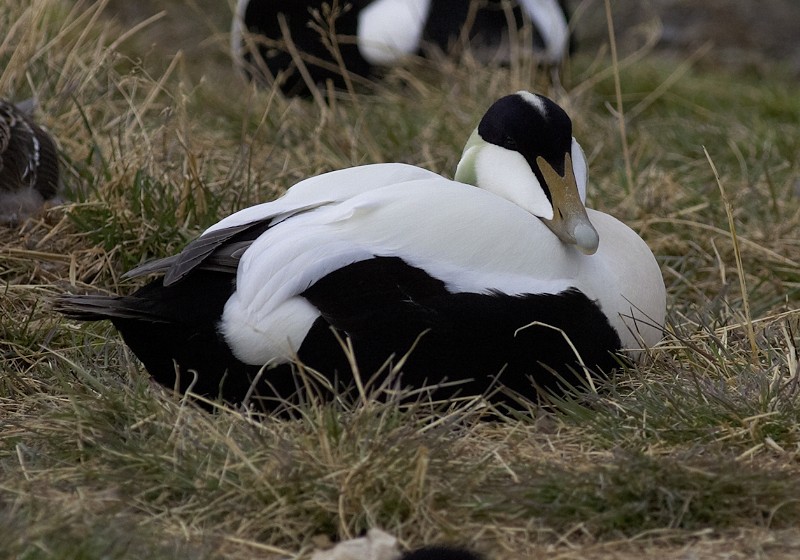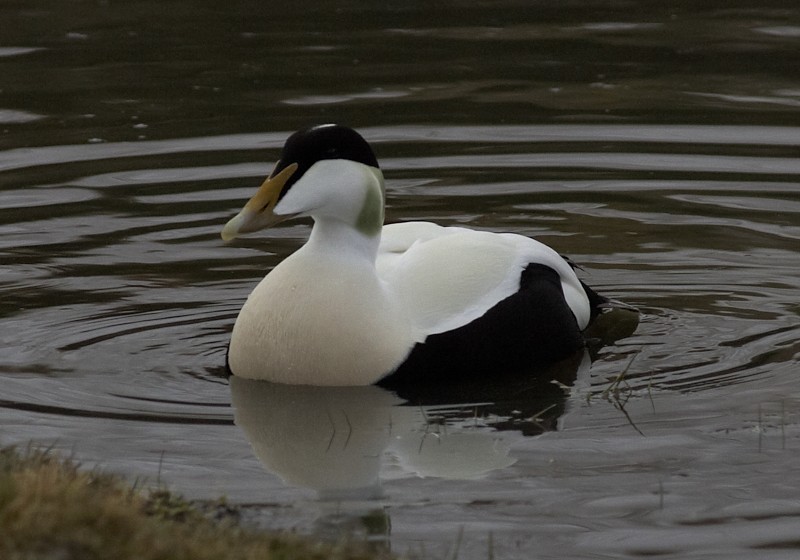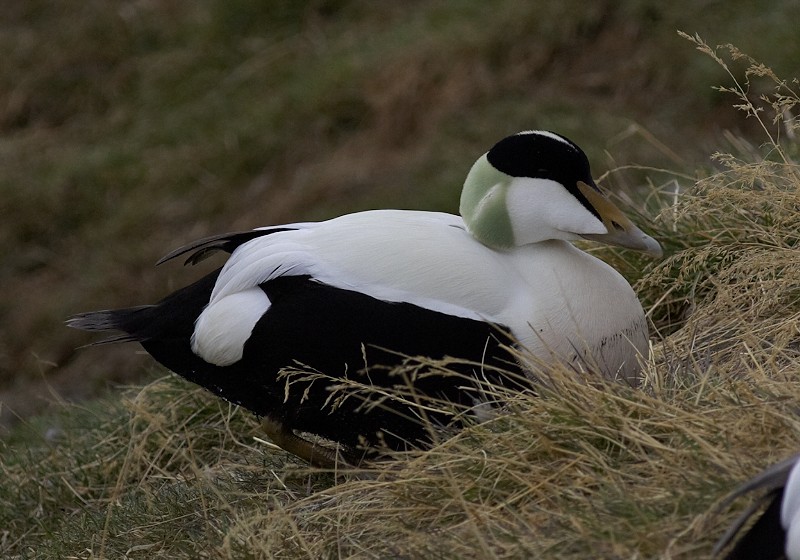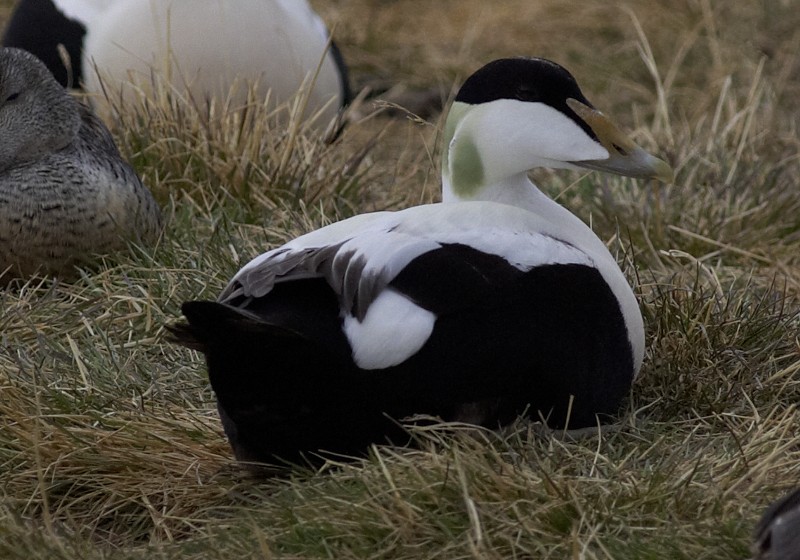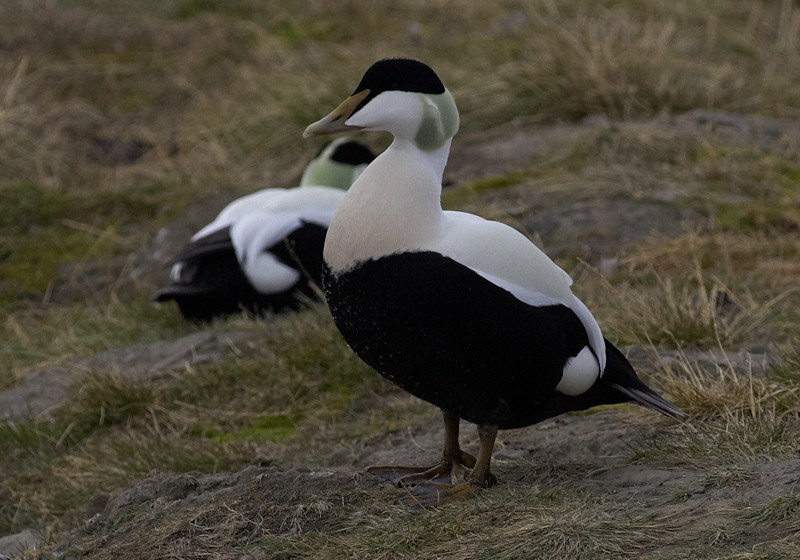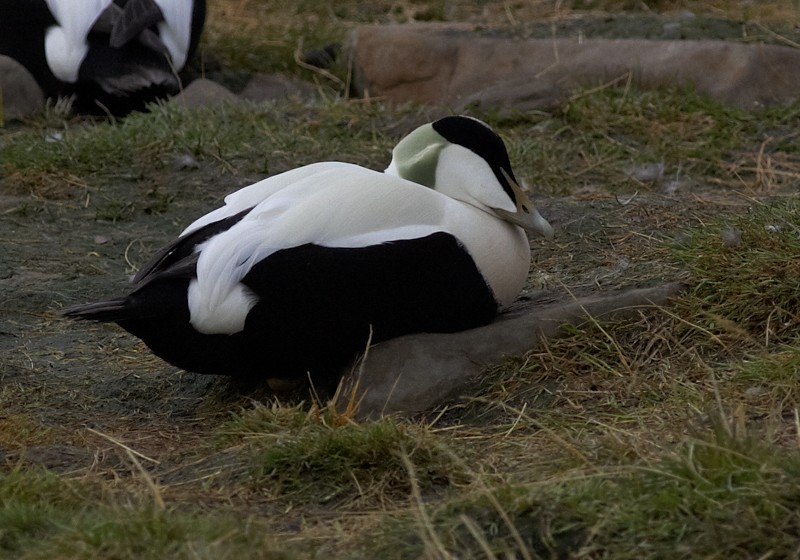Huippuvuorten haahkoja
Eiders in Spitsbergen
Suomi
English
Huippuvuorten haahkat kuuluvat alalajiin borealis, jonka levinneisyysalue ulottuu Frans Joosefin maalta Baffininmaalle (Cramp ja Simmons 1977). Nokan sivujen höyhenys ei yleensä jatku sierainaukkojen tasalle asti. Nokka on oranssinkeltainen ja sen kiilat ovat melko lyhyet. Tertiaalit ovat pitkät ja voimakkaasti kaarevat. Naaraat ovat ruosteenruskeampia kuin nimialalajilla. Garner (2008, Frontiers in Birding) lisää että, borealiksen nokka on vaihteleva, mutta joillakin on kirkkaan oransseja sävyjä (enemmän levinnäisyysalueen läntisissä osissa). Selvät valkeat purjemaisesti kohoavat hartiahöyhenet selässä, mustassa lakissa on usein suora alareuna (siis silmän alta taaksepäin), pään muoto kulmikkaampi, ja rinnan väri voi olla voimakkaampi.
Kuvat alla on otettu kesäkuun puolivälissä 2009 Longyearbyenissä ja esittävät Huippuvuorten haahkan vaihtelua. Maastovaikutelma oli, että noin puolella koiraista näkyi selässä selkeät purjeet.
Common Eiders in Spitsbergen belong to the subspecies borealis, which breeds from Franz Josef Land to Baffin Island(Cramp and Simmons 1977). The feathering of the sides of the bill does not extend beyond the nostril, the bill of the male is orange-yellow, also with rather short and narrow frontal processes. The tertials are long and strongly curved. Females are more rufous than in the nominate. Garner (2008, Frontiers in Birding) adds that borealis has a variable bill colour, but some have a bright orange bill. The subspecies also has two stiff modified scapulars which form prominent "sails" on the back and the black cap often has a straight lower edge from the eye backwards and the breast can be of richer colour.
The photos below were taken in Longyearbyen in mid June 2009 and demonstrate the variation of male Eiders of the Spitsbergen population. The field impression was that about half of the males showed prominent sails.
1
2
3
4
5
6
7
8
9
10
11
12
13
14
15
16
